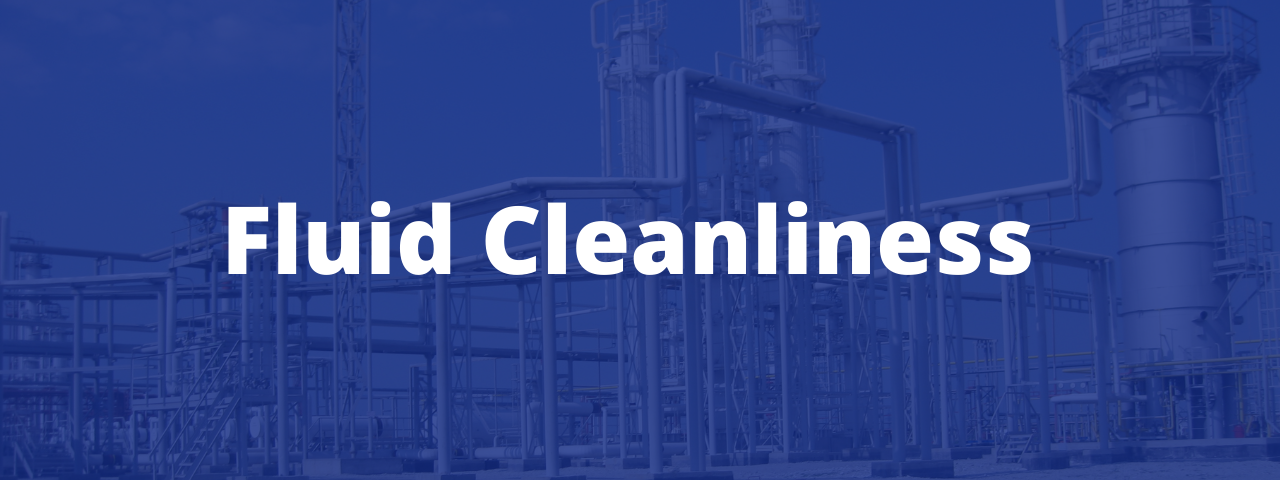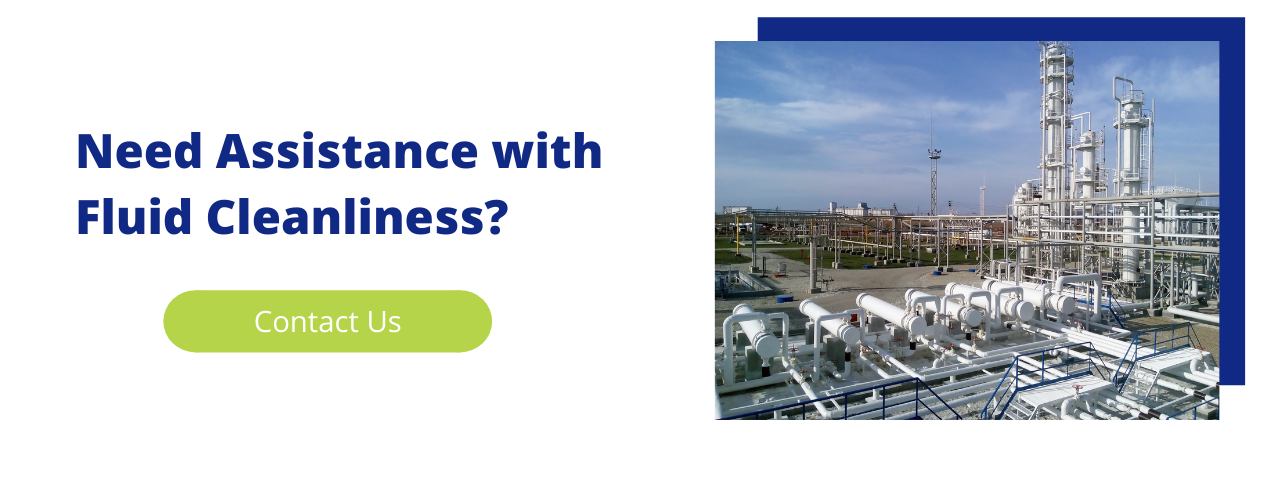February 26, 2025
Fluid Cleanliness
 Clean fluids are critical in the effectiveness and operation of hydraulic systems. If the oil is left unfiltered over time, it can become saturated with foreign particles that can destroy the components in a hydraulic system. This dirty fluid can erode the systems machined components and damage the bearing surfaces. An oil filter helps remove contaminants that can accumulate over time, keeping your system clean and functioning. This leads to less downtime, less maintenance and cost savings on components. Some of the most common particulates that can affect parts of your equipment are oxidized contaminants, sand, sludges, metal fragments, silica and elastomer contaminate. Particulate contamination and water in hydraulic fluids can have detrimental effects on the fluids’ physical and chemical properties. Deterioration of these properties can result in poor system performance while accelerating mechanical and chemical wear. These consequences can lead to increased downtime and other expenses. Fortunately, there are several ways to keep your fluids clean and up to standard.
Clean fluids are critical in the effectiveness and operation of hydraulic systems. If the oil is left unfiltered over time, it can become saturated with foreign particles that can destroy the components in a hydraulic system. This dirty fluid can erode the systems machined components and damage the bearing surfaces. An oil filter helps remove contaminants that can accumulate over time, keeping your system clean and functioning. This leads to less downtime, less maintenance and cost savings on components. Some of the most common particulates that can affect parts of your equipment are oxidized contaminants, sand, sludges, metal fragments, silica and elastomer contaminate. Particulate contamination and water in hydraulic fluids can have detrimental effects on the fluids’ physical and chemical properties. Deterioration of these properties can result in poor system performance while accelerating mechanical and chemical wear. These consequences can lead to increased downtime and other expenses. Fortunately, there are several ways to keep your fluids clean and up to standard.
Fluid Cleanliness Standards
The first step in maintaining your fluid power system should be a complete fluid analysis. A comprehensive examination will show what contaminants are in your system. Identifying these substances will be the key to setting up the proper filtration in your system. At Chase Filters, we recommend TestOil as a trusted source for your fluid analysis. TestOil will provide a detailed report covering your overall system health, oil cleanliness and lubricant condition. Chase also recommends filtering all new fluids when adding them to your system. Without filtration, they will not be clean enough to meet recommended guidelines for most valve and pump manufacturers. You should regularly evaluate expensive components in your system to ensure they’re getting the necessary protection. All fluids leaving and returning to the system should be filtered.
Oil Analysis
Performing oil analysis regularly sets a standard for future evaluations. These tests help indicate when contamination or abnormal wear occurs. A detailed analysis of an oil sample is a valuable preventive maintenance tool. In many cases, the analysis can identify potential problems before a major repair is necessary while also reducing oil change frequencies. An oil analysis reveals vital information, which breaks down into three areas:
- Lubricant condition: Evaluating the lubricant condition indicates whether the system fluid is healthy and fit for further service or ready for a change.
- Contaminants: Increased environmental contaminants in the form of dirt, water and process variants are the leading cause of system wear and failure. Increased contamination indicates it is time to take action to save the oil and avoid any unnecessary system or component wear.
- System wear: An unhealthy system generates dirty particles at an alarming rate. Detecting and analyzing these particles help you make important maintenance decisions. It is critical to remember clean oil minimizes system wear.
Hydraulic Fluid Analysis
Hydraulic fluid consists of oils and other additives specifically designed to power a piece of equipment while also acting as a coolant and lubricant. Hydraulic oil is helpful in different temperature ranges. It reduces wear, rust and corrosion in equipment used in various industries like mining, construction and agriculture. Hydraulic fluid has many of the same properties as hydraulic oil, but it is more predominant in automatic transmissions, power brakes and automobile steering systems. Aircraft systems also use hydraulic fluids. Viscosity is of paramount importance when selecting a brand or type of fluid. Many different factors can contribute to the service life of the components in your hydraulic system. One of these factors involves insoluble particles contaminating your hydraulic fluid. An appropriate fluid cleanliness level must be established and maintained continuously to prevent particle contamination from shortening your parts’ life spans. Contamination in hydraulic fluid speeds up component wear throughout the system. The damage rate depends on the parts’ internal clearances, along with both the amount and size of the particles present in the system and fluid pressure. Normal internal clearances of hydraulic components are as follows:
- Gear pump: 0.5 – 5.0 microns
- Vane pump: 0.5 – 10 microns
- Piston pump: 0.5 – 5.0 microns
- Servo valve: 1.0 – 4.0 microns
- Control valve: 0.5 – 40 microns
- Linear actuator: 50 – 250 microns
Generally, there are four types of contamination in hydraulic oil:
- Native contamination:Native contamination results from substances left in your system during manufacturing or repair.
- New oil contamination:This involves the introduction of contaminants during the manufacturing process or the handling that follows. New oil is not cleaned to the appropriate ISO cleanliness levels and should be filtered before adding it to you system.
- Ingressed contamination:Ingressed contamination can occur when outside air flows through the system. This type of contamination often happens when your hydraulic system undergoes repair or maintenance. Leaking seals are often the culprit of ingressed contamination. An important thing to remember is to thoroughly clean your equipment before and after performing repairs.
- Internally generated contamination:Particles removed from the interior surface of parts will circulate in the system. This type of contamination typically occurs when components rub against each other, specifically when a system is new. Generated contamination can also happen when an internal seal has worn out. Each impact of one of these particles against a surface causes more damage. This phenomenon is known as the wear regeneration cycle. If not addressed immediately, this contamination can increase exponentially over time.
Choose Chase Filters & Components as Your Trusted Supplier
When you purchase an industrial filter from Chase Filters & Components, you get many rewards. Eliminating contaminants from your fluids extends your equipment’s life span, reducing maintenance and repair costs in the long run. Our filters will save you money, maintain production levels and ensure system efficiency. If you’re looking to purchase products from one of the most respected filter manufacturers in the U.S., choose Chase Filters & Components. We have filters to suit all your industrial applications, as well as a wide variety of other high-pressure filters that can accommodate oil, oxygen, fuel, gas and more. We pride ourselves on our high-quality products, efficiency and excellent customer service. With over 30 years in the business, Chase Filters & Components will provide you with the best American-made filtration components on the market. Feel free to contact us for more information on our products or request assistance with choosing a filter.
